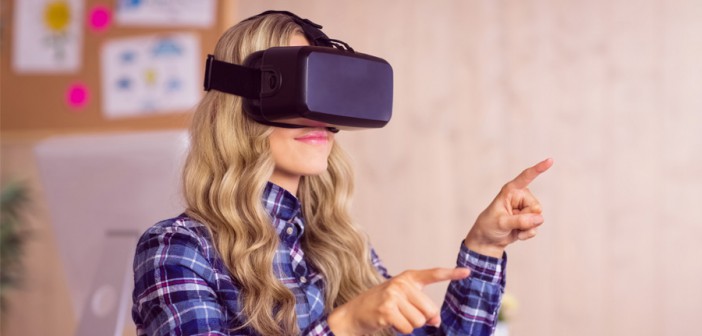Virtual reality is coming, but you already knew that. It’s taking you on journeys to places once reserved for the imagination or the daredevils! That’s the fun part. I see VR heading in a fun and practical direction. Thus far, virtual reality has been somewhat of a novelty—something brands with big budgets use to create a unique experience. It hasn’t proliferated the mainstream in use and application yet, but that’s all about to change. Why? Because it’s not just about showing someone the experience; it’s about getting him or her to feel it.
Consumers demand instant satisfaction and with that come raised expectations for brands. Brands need to provide experiences that deepen the consumer interaction at every touchpoint. Once an early adopter’s dream come true, virtual reality devices are changing the way people consume their entertainment. Whether it’s playing video games or watching TV, virtual reality is the shot in the arm these mediums need.
Let me ask you a question. What are some things you wish you could do or experience in person, but are either too time consuming or expensive? There’s a long list for me, but topping it is attending sporting events and concerts up close and personal.
Purists say there’s nothing like sitting front row at a sporting event or concert. However, for those with limited time or resources, that’s not an available option. Virtual reality is the solution we’ve all been waiting for. In October, the NBA streamed the Golden State Warriors opening night game live in virtual reality. Those at home with VR headsets found themselves seated courtside, seeing and hearing the same sights and sounds as those paying hundreds of dollars for the same in-stadium seat.
It delivered a completely different experience than that of a flat-screen television broadcast, flush with announcers and alternating camera views. The cost for consumers? The price of goggles. No purchase of premium tickets, parking, or food necessary. With VR options like Google Cardboard available for as low as $20, the market will explode when VR catches on and continue to depress costs of traditional advertising.
Beyond just consumer fun, VR also offers a world of applications that can affect our everyday use of time, money, and even effort. One application, in particular, that intrigues me is the use of VR within college recruiting, and more specifically within college athletics. Currently, some major collegiate athletic programs are already building VR into their recruiting strategies. Although it’s far from widely adopted, the addition of VR is giving those potential recruits the ability to visit campus (free of charge) and take in the sights and sounds normally reserved for full-time athletes.
Take the University of Michigan, for example. You can walk through the stadium tunnel on game day, witness Coach Harbaugh’s halftime speech or sit in on a team meeting in a packed classroom. This isn’t available in real time just yet, but it’s unique in its own right and remedies an existing problem: the high costs of recruiting. Though only bigger schools take advantage of this now, it’s only a matter of time before smaller schools embrace VR and unlock the ability to expand their recruiting landscape.
While some people see VR as only a brand play and plateauing technology, I see a whole new (virtual) world for brands to explore. The possibilities are not only exciting and cutting edge, but they offer brands a chance to show customers a real and personal experience without the risk, effort, cost, or time commitment of doing it in person. Tangible experiences sell better than pictures and paper—it’s that simple. In fact, according to the Event Marketing Institute’s 2015 study, 12% of Fortune 500 companies surveyed saw an ROI of 20:1 or higher from an event or experience because the impact of experiential marketing directly reflects on purchase behavior. Purchase likelihood following an experience are up to 87% now, from 68% in 2014 and only 51% in 2013.
While naysayers describe virtual reality as a slowly dissipating fad or novelty, I see so much more! More applications, more integrations, and a whole new world of consumers to connect with. We’ve come so far with this technology already. The possibilities that await us in 2016 will continue to amaze us. Strap in and take your Dramamine because the virtual world is upon us.


